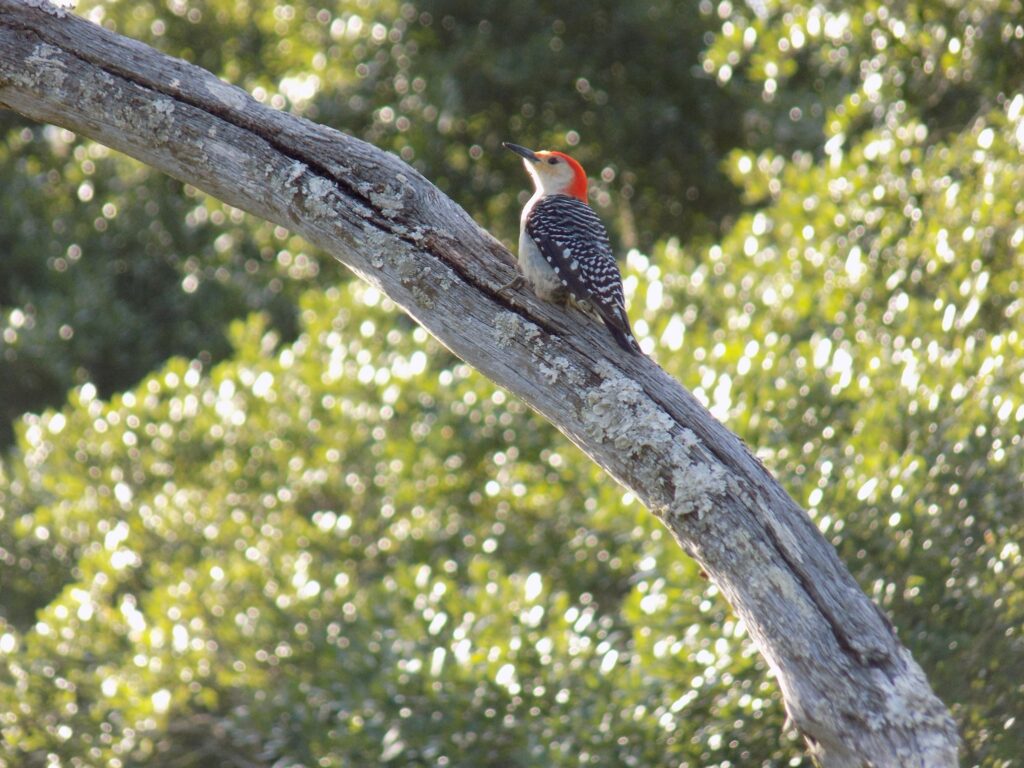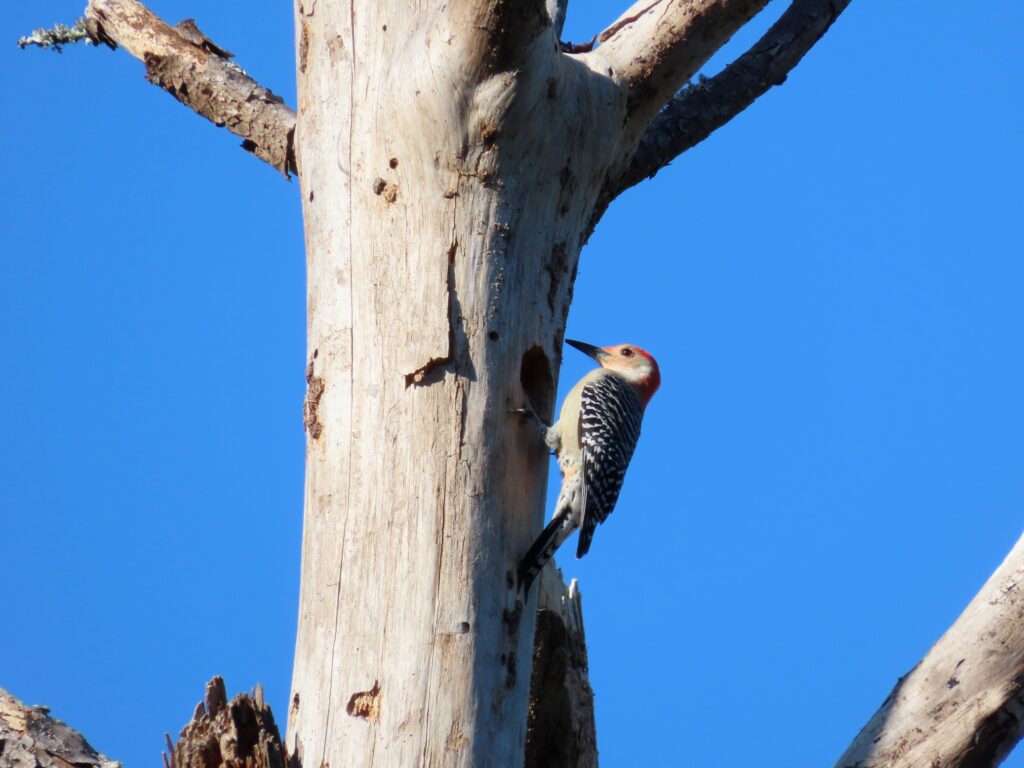


This week for Flora and Fauna Friday, we have our resident red-necked feeder frequenter, the Red-bellied Woodpecker (Melanerpes carolinus).
Red-bellied Woodpeckers are residents of the Eastern United States. They’re a common sight in nearly every corner of South Carolina, so long as there are trees. Red-bellied Woodpeckers are a medium-large species of woodpecker that shares the stereotypical red, white, and black woodpecker plumage. They don a cape of black rippled with thin white stripes down the back and cover their head and neck with a scarlet cowl. The cowl of the male runs up to his beak and the female’s only comes up to the back of the head, leaving her cap a light gray. Their namesake red belly is much less noticeable than one is led to believe. Their belly is mostly eggshell-white but right down the middle of their lower abdomen runs only a wash of red. Red-bellied Woodpeckers make two distinctive calls, the squawk-like “Qerr” and the oft repeated “Chi” call, both loud and with a resonant vibrato quality. Pairs will also make an odd squeaky, wheeze-like call when talking to each other and males often “drum” on dead trees with a rapid-fire drum roll of head-butts.
On Edisto Island, Red-bellied Woodpeckers can be seen or heard nearly anywhere at any time. They inhabit all forested habitats but are most common in hardwood stands and forested wetlands. They’re not shy about moving into residential areas either. Like all our woodpeckers, they are cavity nesters and excavate holes in dead trees to build their nests in. Generally, they excavate a new nest every year. Red-bellied Woodpeckers are generalists and omnivores. They spend a good deal of time feeding in the standard woodpecker manner, climbing up trees and limbs, looking and listening for insects in the wood, and chiseling away until they find them. However, they also eat a good deal of nuts, seeds, and fruits. They are also our most reliable visitor to birdfeeders of all our woodpeckers and prefer sunflower seeds, suet, and peanuts. Red-bellied Woodpeckers are pushy and like to run off other birds from feeders. They visit birdfeeders most often in late spring and summer, when they’re raising young.